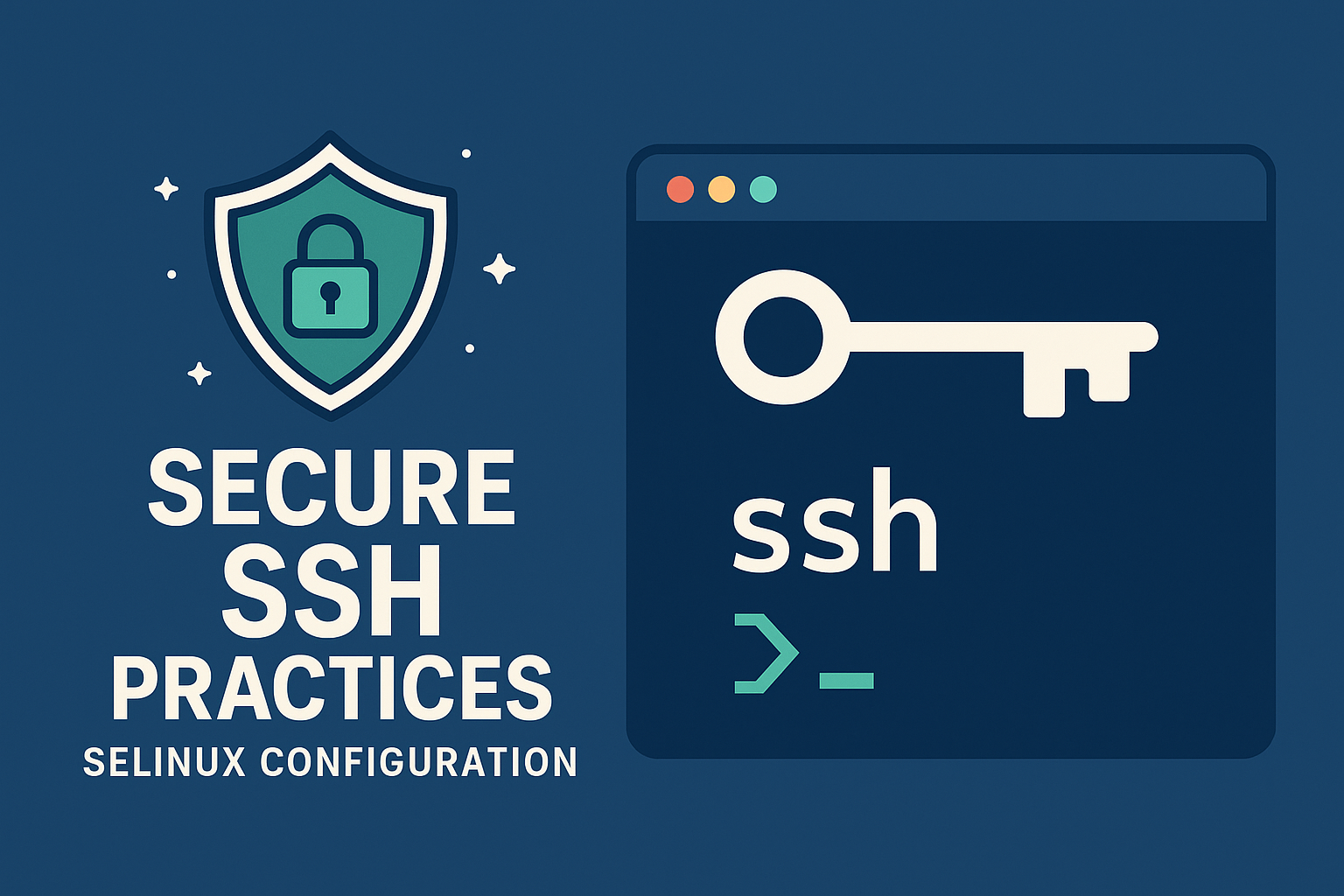🛡️ Blocking Admin SSH Logins with SELinux (`ssh_sysadm_login`)
In this guide, you’ll learn how to use SELinux to block direct SSH access for privileged users, enforcing access through a restricted jump account instead. By disabling the ssh_sysadm_login boolean and mapping users to the sysadm_u role, you gain a policy-enforced control point that hardens your system against misconfiguration, privilege abuse, and lateral movement. Because true security doesn’t just start at the login prompt—it controls who gets there in the first place.
Preventing direct administrative SSH access is a vital component of any defense-in-depth strategy. In this guide, we’ll explore how to restrict privileged users from logging in via SSH using SELinux’s ssh_sysadm_login boolean. This ensures that administrative access is only available after connecting through a restricted, non-privileged jump account — a critical safeguard against misconfiguration and privilege abuse.
📚 Table of Contents
- Overview: Why Restrict Admin SSH Access
- Step 1: Ensure SELinux is in Enforcing Mode
- Step 2: Associate Admin Users with
sysadm_u - Step 3: Disable
ssh_sysadm_login - Why Not Just Use
sshd_config - Final Thoughts & Additional Hardening Tips
🧭 Overview: Why Restrict Admin SSH Access
In Part 1 of this series, we set up a restricted jump user — a non-privileged account used to SSH into a Linux server. This user can then escalate privileges locally (e.g., using su) but cannot SSH directly as root or another admin.
In this part, we take the next step: blocking direct SSH logins for admin-level users using SELinux. Specifically, we’ll manipulate the ssh_sysadm_login boolean to enforce this restriction.
This method provides a powerful control point that can’t be bypassed by misconfigured SSH settings alone.
New to SELinux? Learn the basics in our SELinux Primer
🔍 Step 1: Ensure SELinux is in Enforcing Mode
To apply SELinux policies, your system must be running in enforcing mode:
1
2
3
4
5
6
7
8
getenforce
# Output should be: Enforcing
sestatus
# Look for:
# SELinux status: enabled
# Current mode: enforcing
# Loaded policy name: targeted
If SELinux is not enforcing, enable it temporarily:
1
sudo setenforce 1
Install required SELinux tools:
1
sudo dnf install -y policycoreutils selinux-policy-targeted policycoreutils-python-utils
These packages are essential for managing SELinux users and applying policy contexts — especially the sysadm_u context used in the next step.
👥 Step 2: Associate Admin Users with sysadm_u
To restrict specific users via SELinux, you must assign them to the SELinux user sysadm_u. This context is tied to elevated privilege policies — and SELinux uses it to gate SSH access when ssh_sysadm_login is disabled.
Example:
1
sudo semanage login -a -s sysadm_u rchamberlain
Replace
rchamberlainwith the actual username of your administrative user.
You can confirm the mapping with:
1
semanage login -l | grep sysadm_u
🔒 Step 3: Disable ssh_sysadm_login
The SELinux boolean ssh_sysadm_login determines whether users mapped to sysadm_u are allowed to SSH into the system.
To disable this access:
1
sudo setsebool -P ssh_sysadm_login off
Verify the change:
1
2
getsebool ssh_sysadm_login
# Output: ssh_sysadm_login --> off
At this point, any users associated with sysadm_u are fully blocked from SSH login — regardless of their group membership or presence in sshd_config.
🧱 Why Not Just Use sshd_config?
The SSH configuration file (/etc/ssh/sshd_config) allows administrators to permit or deny login access for specific users or groups.
While useful, this method alone is highly susceptible to misconfiguration:
- Admin users might be unintentionally included in allowed groups.
- Changes to group memberships might reintroduce access inadvertently.
- There’s no enforcement context beyond simple group/user rules.
By contrast, the SELinux-based approach:
✅ Adds a mandatory access control layer ✅ Functions independently of SSH group settings ✅ Prevents privilege escalation through SSH, even if SSH settings are misconfigured
For best results, use both approaches together — but never rely solely on
sshd_configfor critical access restrictions.
🛡️ Final Thoughts & Additional Hardening Tips
Using SELinux to disable ssh_sysadm_login is a powerful, low-level hardening strategy that:
- Forces administrative access to go through controlled entry points
- Reduces the attack surface of privileged accounts
- Prevents SSH misuse due to config drift or accidental group changes
For a more secure Linux SSH workflow, combine this method with:
- 🔐 SSH Key Authentication
- 🚫 Fail2Ban for brute force protection
- 🔐 Two-Factor Authentication (2FA)
- 📜 Audit logging and centralized monitoring
Need Linux expertise? I help businesses streamline servers, secure infrastructure, and automate workflows. Whether you’re troubleshooting, optimizing, or building from scratch—I’ve got you covered.
📬 Drop a comment or email me to collaborate. For more tutorials, tools, and insights, visit sebostechnology.com.
☕ Did you find this article helpful?
Consider supporting more content like this by buying me a coffee:
Your support helps me write more Linux tips, tutorials, and deep dives.

